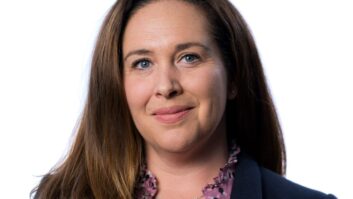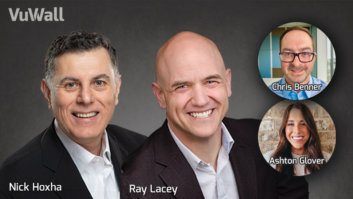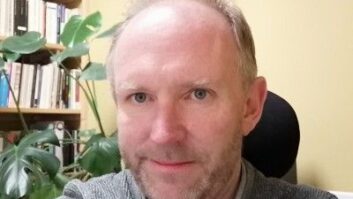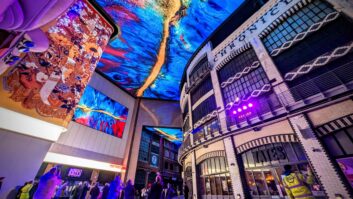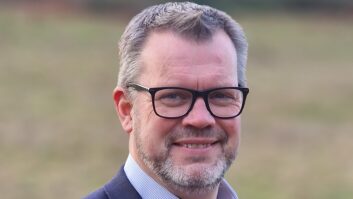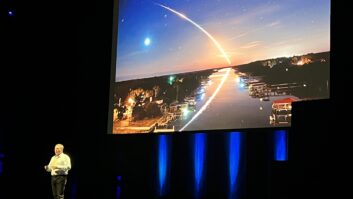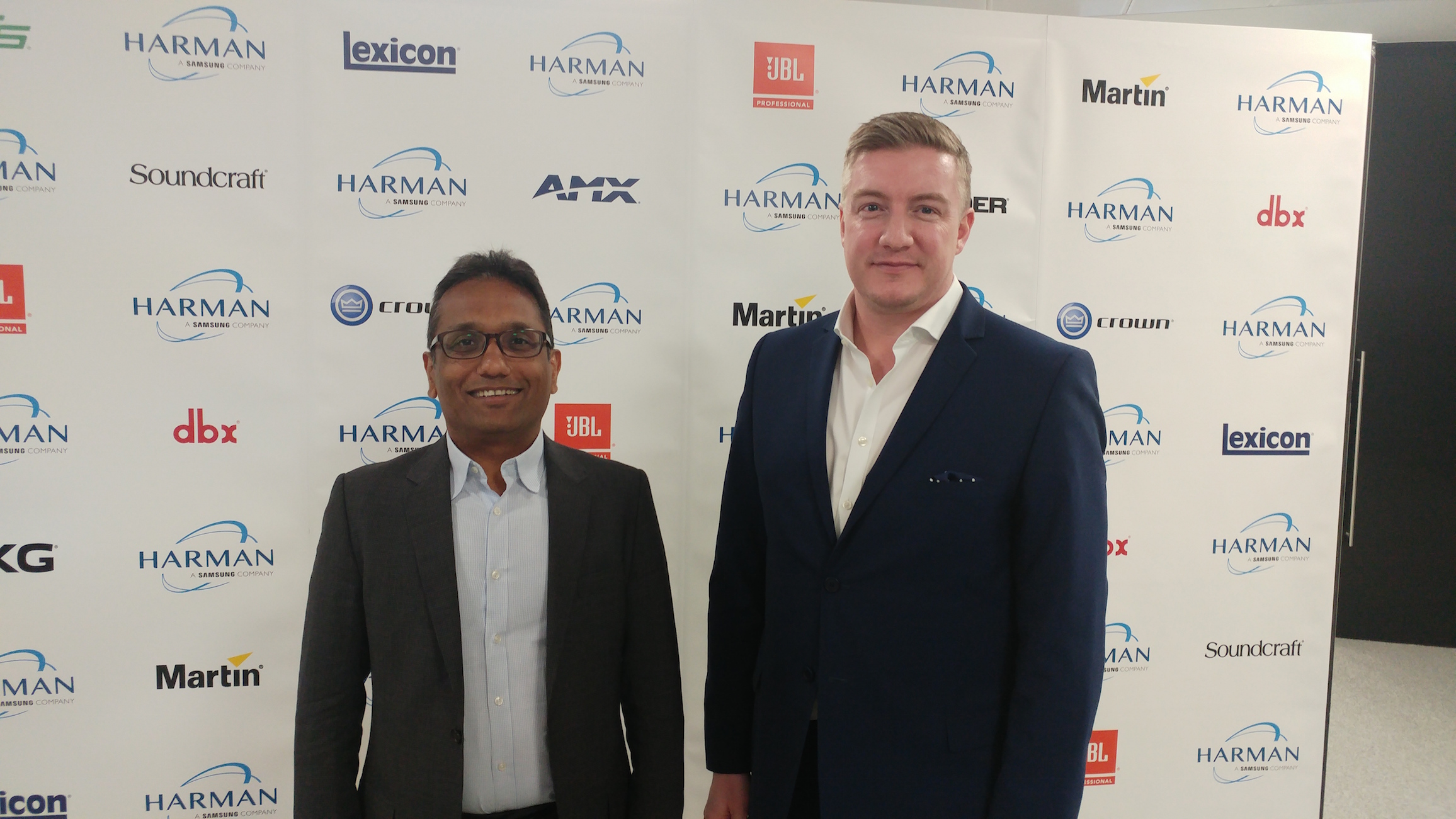
Harman’s Professional Division hit the headlines last September when it announced that it was laying off 650 people as part of a major restructuring. This was part of a transformation programme to consolidate its technology expertise into three locations (known as Centres of Competence), rather than having facilities based around each individual brand. In at least one instance, former employees have got together to set up a new company: Austrian Audio has been founded by engineers previously employed at the Vienna office of microphone brand AKG.
Another key part of the new strategy has involved the creation of Harman Experience Centres around the world. Installation visited the fourth of these, the London Experience Centre – located in Hemel Hempstead, 40km north-west of the UK capital – on its opening day, 4 April. Erik Tarkiainen, VP of global marketing, led a tour of the Centre, which showcases combined Harman solutions for a number of vertical sectors. We then spoke to Mohit Parasher, president of Harman Professional Solutions, and Chris Smith, VP and general manager EMEA.
“If you want people to work together, you have to put them together physically”
What’s the role of the Experience Centre? Who’s it for, and what are you hoping it will achieve?
Mohit Parasher: Let’s go back a bit and put this in context. After we created our solution-oriented go-to-market, we worked hard over the last several years at acquiring the right kinds of products and technologies to complete the solution suite.
We realised we were not able to articulate these solutions clearly to consultants, system integrators, end customers. We noticed that with customers who wanted to buy a particular product, sometimes we just explained that particular product without really articulating what else is possible.
So we started investing in Experience Centres. We built one in Singapore, one in Shanghai, one in Los Angeles and now one in London.
It was important to make it real for our stakeholders, to see how these things can be put together. More importantly, it’s not really that difficult. For example, we would talk to cinema exhibitors, and we would sell them audio for inside the auditorium. Harman has over 45% share in that auditorium market, but the cinema owners are no longer only thinking about what’s happening inside the auditorium but also about the customer journey outside it, where you buy popcorn and a Coca-Cola – the merchandising space. And we have technologies that can address these needs. And so suddenly what has happened is that conversation from inside the auditorium is now expanded to say, “What can you do in my lobby?”
So the role of the Experience Centre is to create that sense of the art of the possible.
Do you have targets for the numbers of people you’re hoping to get through the doors over the next six months or year?
MP: I’ll tell you the experience we’ve had so far. The first 90 days after we opened the Los Angeles Experience Centre we had 1,000 people that walked in. That was the response that we got and it was really interesting. We had end-customers – large stadium owners, large theme park owners, retail chains, corporate, education, government customers – and people from touring and lighting and those kind of customers. Even – I can’t reveal the names but some real A-list rockstars took over the Experience Centre for the entire night. They just sat with their lighting designer and sound designer to program and check their next show.
We do have some targets on the numbers of people, but it’s more about the quality of conversation than the number. Because we get the numbers at our tradeshows. You go to InfoComm or ISE and meet thousands and thousands of people for short 10-20 minute slots. And they’re going around all the booths and you get a little bit of their attention.
Is this going to affect your tradeshow strategy?
MP: It will, definitely. We’re going to narrow down our presence in tradeshows. We will of course be part of the major industry tradeshows and also major regional tradeshows but it’s going to reduce the number of shows we do overall.
This isn’t exactly the heart of London, but then if you had put a building this size in the heart of London, it would have been horrendously expensive. What was the decision process regarding where to locate this building?
Chris Smith: This isn’t a facility only for the UK, it’s for the whole EMEA region, so half-hour proximity to Heathrow was critical to the decision about the location. We’re 25 minutes from Luton Airport, which is a low-cost airline destination for many of our European customers even as far out as Eastern Europe. Similarly there’s Stansted 40 minutes away, and Gatwick about an hour and 10 minutes away. So we very much had the airports in mind for bringing customers in efficiently. As an illustration of that, many of our distribution partners here are arriving and leaving today. It was harder for them to get to our previous office in the City of London in one day, than it is to get here.
My expectation for the region is that this becomes an extension of our EMEA partners’ market offering too.
To look at your overall strategy… you’ve consolidated your product expertise in particular places round the globe – basically one centre per technology area.
MP: Yes. We’ve got lighting in Aarhus, we have taken acoustics and put it near Los Angeles, which is where all the big touring acts come out of, so we’re very close to artists, as well as sound designers, sound engineers and others. And then we’ve put everything else – which is video and control, DSP, electronics and everything else that goes with that – in Richardson in Texas, because that place is becoming a hub for engineering talent, including software. And we have our software centre in Bangalore and our product engineering based out of Shenzhen.
We used to have 14 R&D sites. One of the things that I’m a proponent of is that if you want people to work together, you have to put them together physically. We’re seeing this trend in all technology companies now – they go for large global campuses for R&D. Maybe 15 or 20 years back there was a trend for working remotely, but people realised that it doesn’t create the necessary collaboration – especially in R&D, to think of the next big idea. If you have your electronics engineer sitting several time zones away from your acoustics engineer who is sitting in another city from your video and control engineer, it’s difficult for them to think of this whole thing as a solution.
[Closing those sites] was an expensive, heartbreaking and in some sense a tough thing to do. But it was a very important thing for us to create that platform from where we can leap.
The downside to that is that obviously there was a whole lot of engineering talent that couldn’t move, and so you’ve lost that in certain areas – AKG in Austria is an obvious example of that. How much of a setback has that been?
MP: Obviously we expected that we would lose some talent, so this did not come as a surprise. We planned it extremely carefully. We have a very extensive – I would say almost state-of-the-art – knowledge transfer mechanism. We not only took all the information that was available digitally, but also what was available in the brains of our engineers. We captured three to four terabytes of information and laid over it a kind of a search engine, which any engineer anywhere in the world can access by using keywords. So for example if there’s a DSP engineer working on solving a certain problem, all they need to do is define that problem within a search engine and get all the possible information.
So we’ve taken very serious steps to build a platform where we can capture most of the information and a large part of the knowledge. But we definitely lost some people who had some things which cannot be articulated.
At the same time, right now we are in the highest hiring spree ever in the history of Harman Professional. We are hiring about 350 people across the world, many of them are new engineers, many are software engineers. With the combination of this hiring and the knowledge capture, we hope to create a base of the existing knowledge but at the same time bring fresh ideas into the business.
So it’s sad in one sense, but in another it’s a great opportunity for us to create a great mix of original knowledge plus fresh input from outside of the industry. I think that that’s what was needed in order for us to move to the next level.
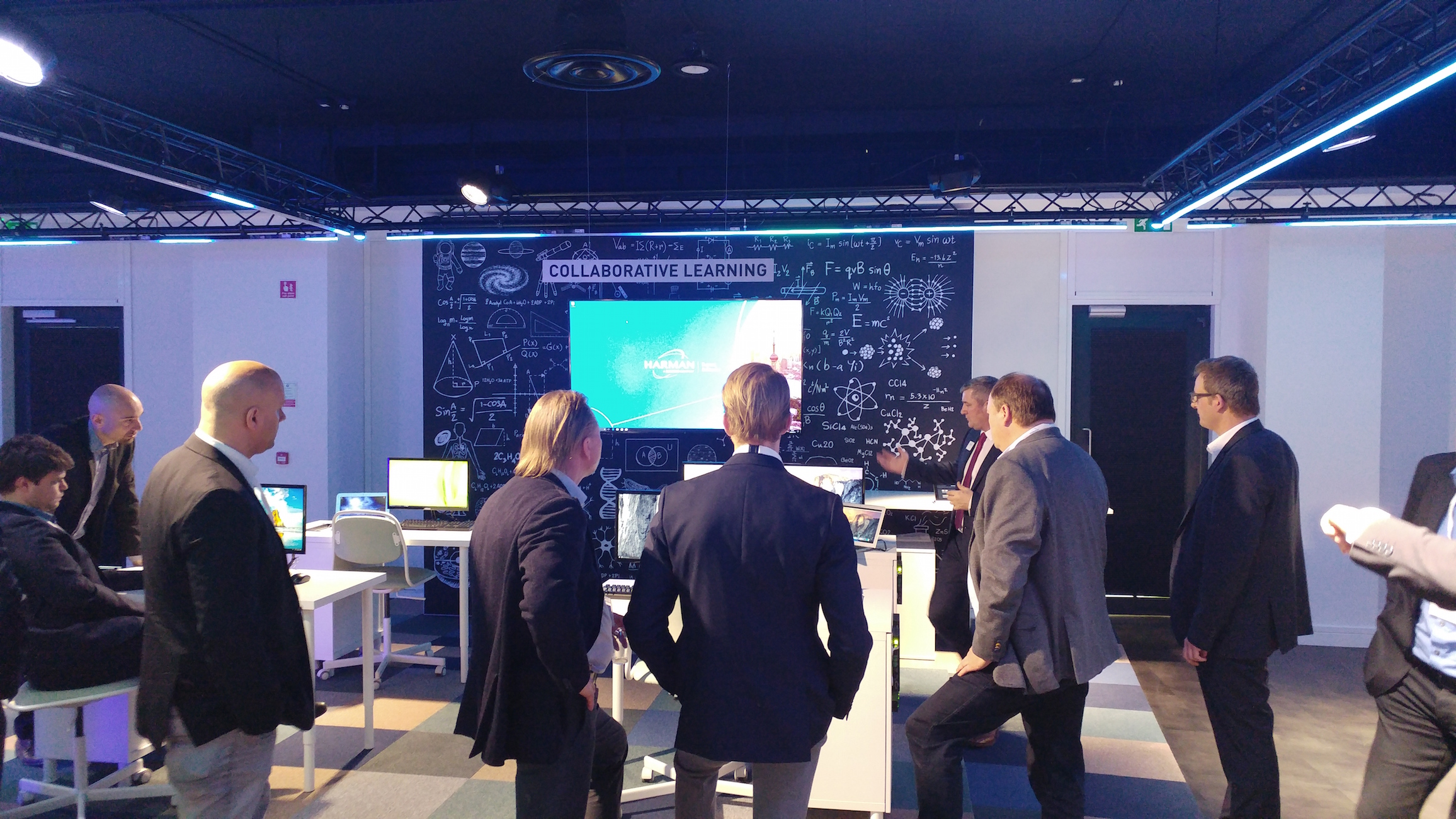
During the tour Erik said that, in a sense, this whole move is really the last step in terms of integrating all the brands and technologies that were acquired over previous years. I guess you’d concur with that.
MP: Yes. We acquired all these things, we had the vision of putting the solutions together, making sure that the products are user friendly: easy to connect with each other, easy to install and easy to service. That’s the first thing.
Second, every product can go on the network, so you have to play by new rules – from bandwidth optimisation to security for example – things that we never thought of in the pro industry before.
To create that, we created the go-to-market first; now this is the last step, where we are tying in all the R&D, the operations, the manufacturing, procurement and so on into one single platform so that we can use the considerable strengths of Harman in other businesses. And now as part of Samsung we get a really big platform to leap from, and leverage them into creating that final go-to-market – which is thinking of everything, from product ideation to solution architecture to product development to sales to aftersales service, in a seamless manner across our technologies and brands. So this was the final thing, but it doesn’t stop here. We’re investing very heavily in our IT platform to create integrated business planning across all products; to create engineering apps across all domains; to create dealer portals where customers can interact with us across all brands; to create unified call centres for technical support and aftersales service; to create unified repair centres. So it’s a full end-to-end restructuring in that sense.
How important are the individual brands or sub-brands? Are you going to maintain those identities or are they going to fall away?
MP: They are very important – each brand is a power brand by itself. I like to describe Harman Pro, as more like a house of brands – and a house of technologies that is behind those brands. Harman Pro is more like a Unilever business than a single-brand business. We continue to invest in those brands as the forerunners in each of the vertical markets that they serve.
“It’ sad in one sense, but in other it’s a great opportunity”
So for example, a customer might be our customer because of AMX but in a corporate office you also need PA, architectural lighting, ceiling speakers, microphones and all kinds of other things. So our entry point into the customer might be AMX, but over the lifetime of that customer we will be able to strengthen the relationship by offering many more solutions.
As this new approach covers the whole product lifecycle, do you have evidence that it is working now? How is it going to play out?
MP: It is already working. All these things that I have described are already done. As we stand today in April 2018 we are 80% of the way done, and by June we’ll close the restructuring project.
For aftersales service in the US, we have already created one single 1-800 number for all the brands. We’ve consolidated all the repairs into one place. In Europe as well, repairs have been consolidated already. Today our sales team goes to market, and our distribution goes to market, with the full suite of solutions.
We’re investing a huge amount of money, almost $30 million, to do several things, like the Experience Centre here. Another thing is labs: we’re upgrading our labs in Texas, building new labs in China, upgrading our labs in Northridge, so the R&D piece in those segments will be finished by June. So that’s almost done – and in procurement and manufacturing, consolidation is already done.
CS: We’ve also proven to the market that we can deliver industry-leading products earlier than we could have previously. We launched the Encore lighting product ahead of when we said we would. That’s based on all of the restructuring that’s been taking place prior to today.
In terms of results, is it just financial results that you’re looking at, or are there other things?
MP: Of course financial results are one of the things – but they are really the by-product. The key thing about the consolidation of R&D is putting engineers together so that they can build the solutions. The fact that it becomes more cost-effective is a by-product of what we really intend to do. I don’t believe that you can cost-save your way to glory – that’s not how it works. You’ve got to create a platform that is fit for the future and fit for growth, rather than just save money. It does save us money, that’s for sure. But we’re reinvesting that money back into labs and IT systems and Experience Centres. So the results are going to be a lot more than just cost saving.
I think we recognised early on that the sweet spot is to think of the customers’ problems as a whole solution. What Harman is doing right now is to put it all together to solve the entire problem for the customer or create the experience that the customer wants us to deliver.
It doesn’t mean that the customer must buy only Harman products – that’s not the intention. The intention is to say, this is what the solution can look like, and that’s how the products need to work together. And this is the standard you must hold everybody else to – this is how simple it should be to use the products.
There is perhaps a sentimental attachment to some of the brands, particularly among customers in fairly niche markets who may not be interested in the whole across-the-board offering. I think they miss their old friends in the old locations. What would you say to them?
MP: Any change is faceless in the beginning – people find it uncomfortable, it’s human nature. I think that as people see our delivery of products, and what this is going to deliver in terms of solutions, our partners will start to see the possibility for them to grow their own business. All of our partners all over the world are very excited by what we’re doing right now, and by the combination of Samsung displays into our solution. There might be some people who may still wish they still had the old office to go to. But our partners have already gone beyond that, and our customers will too. What they hold us accountable for is delivery of what we are promising, more than where they talk and who they talk to. As long as we can improve our service to our customers, that’s what is going to keep us honest.
CS: Some of our partners who are involved in the legacy are already seeing that their individual brands are benefiting. We would love for everybody to see the benefit of every brand, every time, but the customers who don’t are still incredibly valuable to us. We haven’t lost that communication with them, and we don’t ever want to lose the heritage of what’s made us who we are, either. We’re very sensitive to it, both on a local level and individually when we’re with these customers face to face.
